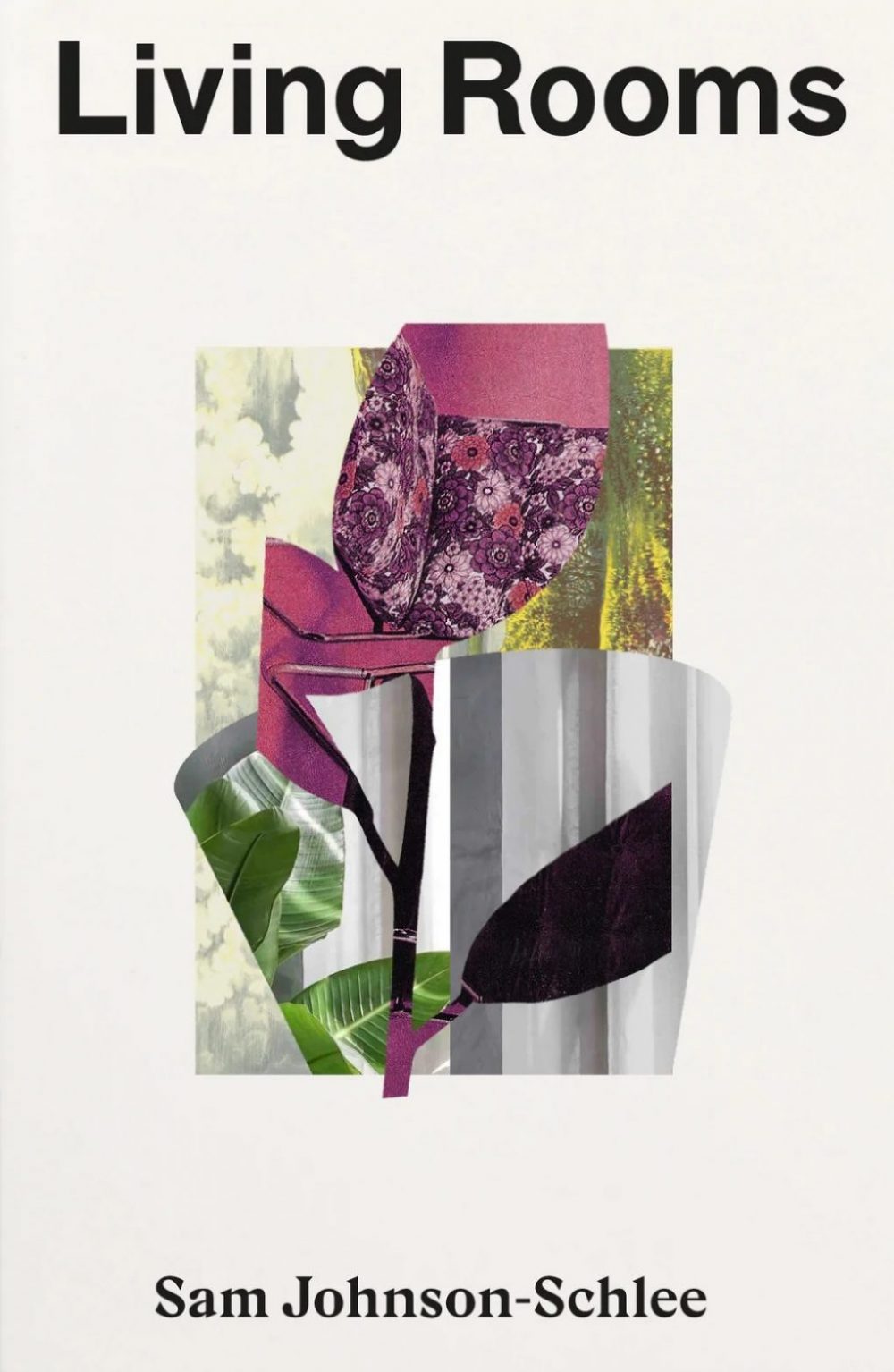Living Rooms by Sam Johnson-Schlee

When I first moved out of my parent’s home, into a flat with my fiancé many years ago, my sister’s lovely Dutch friend came over and told me it was like a smaller version of my parent’s house. At the time, it felt like a compliment but also, it felt like I hadn’t quite made my own mark even though my sister and I began wielding an influence on the décor at home before we moved out. I looked around me and noted I had the typical red carpet, mine was from Ikea, my parent’s much larger, more beautiful and far more expensive rug was from Turkey. I had paintings up immediately, a wall of books, nazar boncuğu’s were placed at entrances to keep away bad intentions and thoughts by others and yes, maybe it was a duplicate somewhat, except mine was full of plants. My parents kept plants in their porch, and I’d go around introducing plants into other living spaces, it was what I did before plants became fashionable. I knew having green directly next to me, lifted my mood, I couldn’t understand why you wouldn’t want that. When I started university, I remained at home, but I began arming my room with pieces I’d find in Greenwich Market. Books were bought on a weekly basis for fifty pence, an elephant hanging, an antique chair and so forth. I was asserting my own style but what did that style mean?
Johnson-Schlee’s analytical essay Living Rooms opens our eyes to the history behind the objects that enter our homes and the strange relationship we have with what we buy and bring into those spaces. Our influences for example may be subtle, an inspiration from childhood or maybe the media, I’m looking at you The Modern House. I know I was heavily influenced by a friend and neighbour in my childhood who I babysat for when I was fifteen. Her house was simplistic, she had Turkish rugs from her teaching years there, she had exposed wooden floors, plants, musical instruments, and no television but most importantly, she had chiming clocks everywhere which soothed and regulated my breathing as I lay on her day bed, reading novels and doing my psychology homework. As soon as I found a Smith chiming clock at Greenwich market, I gave my £25, took it home to discover it didn’t work. I took it over to the woman I babysat for, and her husband fixed it for me. I still have the temperamental clock becoming ever more temperamental by the day. I was constantly searching for my own idea of wholesome simplicity in my home but what was the history behind these objects?
I soon discovered upon reading Johnson-Schlee’s essay, that the creation of my own home is part of what he refers to as a dream world. In this dream world, we are able to pretend that our belongings have no history, but they are in fact the work of many hands and that our homes can be a sanctuary but also a trap. He writes, ‘The objects and designs of the interior are protective charms that fortify us from the world outside; they are the nesting materials we use to hold ourselves in place inside the unwelcoming shell of commodity.’ Each chapter has a heading of a household item and the history behind them, how they came about and who was really behind their creation. I had to hold off from telling my daughter that her terrarium was related to the Wardian Case, a large glass case which, ‘allowed the British to smuggle tea plants from China to establish plantations in India. These cases were also used to display plants, particularly ferns to turn plants into commodities, and thanks to these hermetically sealed cases, the colonial impulse to collect and taxonomise was transformed into a parlour game.’
Johnson-Schlee has dedicated this book to The Galvey, his grandparent’s home which was built from a kit and is able to adapt to its owner’s needs. It is the spirit of this home which resides throughout, and Johnson-Schlee’s warm memories within that space. It’s a home where nature creeps in through the window, where his grandfather, a painter, punctured windows into its carapace to let in light. It is where Johnson-Schlee lived for a while when his parent’s separated, rooting itself deeper into his being. Our homes really do have a way of making us forget the outside, they hold us as we sometimes struggle to hold onto them. They can be places where we leave traces of ourselves to mark permanently. They can also be places where all signs of life can be eradicated as in the case of intstagrammer Mrs Hinch who cleans every surface to an inch of its life, an almost sinister character who would leave Sherlock Holmes nothing to go on for clues. This essay, with the help of Johnson-Schlee’s detective skills into our homes, alters the way you look at how your home is assembled. When I think of home or of ever moving into my dream country home once I’ve learned to drive- ha! I visualise all of my favourite belongings that would come with us and of the warming meals we would prepare. Of resting by a fire after walking our cheeky whippet with our books and having friends and family over. These are all warming thoughts, they are not the worries of mortgage payments, or the cost of utilities because the home makes you dream deeper than anything else, but dreams cannot always be made true.

-
-
-
-
/ 0 Comments